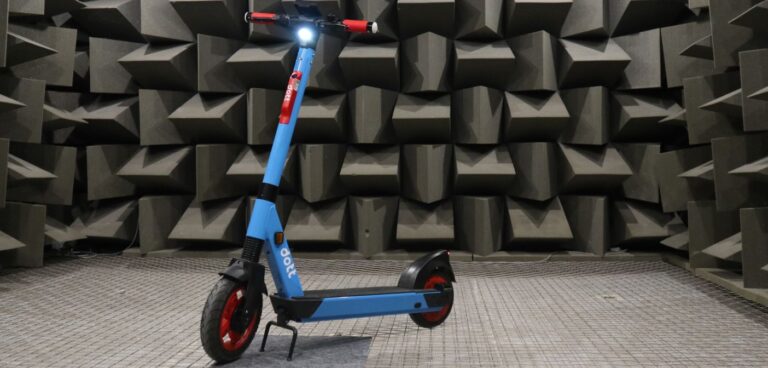Micromobility operator Dott is set to integrate sound detection across its Europe-wide e-scooter fleet.
In June this year, Dott launched its e-scooters in London following a successful tender win. The vehicles feature an array of sensor technology, rider-facing disability awareness education, smart parking technology and audible sound detection.
Expanding on its sound detection initiative, Dott has partnered with the University of Salford, and the Royal National Institute of Blind People (RNIB) to conduct the first feasibility analysis for artificial motor sounds of light EVs.
The goal of the project is to achieve better detectability for those with visual impairments, as well as finding the optimal sound characteristics for a future acoustic vehicle alert system standard for light EVs.
The research project, funded by Dott, aims to create a distinctive sound that can be easily recognised by people with visual impairments. Following months of physical hardware, sound testing, and preliminary assessment by the RNIB, the next step of the project is to conduct extensive live testing, which is set to begin shortly within several of Dott’s operational cities.
Henri Moissinac, CEO of Dott, said: “We are excited to be leading the way in sound detection technology, upholding our responsibility to cities and the residents who live in these cities to produce the safest rides for everyone.”
As part of the testing, a digital sound file created by acoustics experts at the University of Salford will be embedded into Dott e-scooters to determine perception and noticeability in busy cityscapes throughout Europe.
Dr Antonio J Torija Martinez, principal investigator at the University of Salford, said: “We have developed a standalone system to generate sound signals according to the e-scooter’s operating conditions, such as vehicle speed, and investigated pedestrian awareness of an approaching scooter with a series of added warning sounds.
“Further work on the project is planned to optimise the design of the sound generation system and of the warning sounds for an optimal balance between noticeability and annoyance.”





